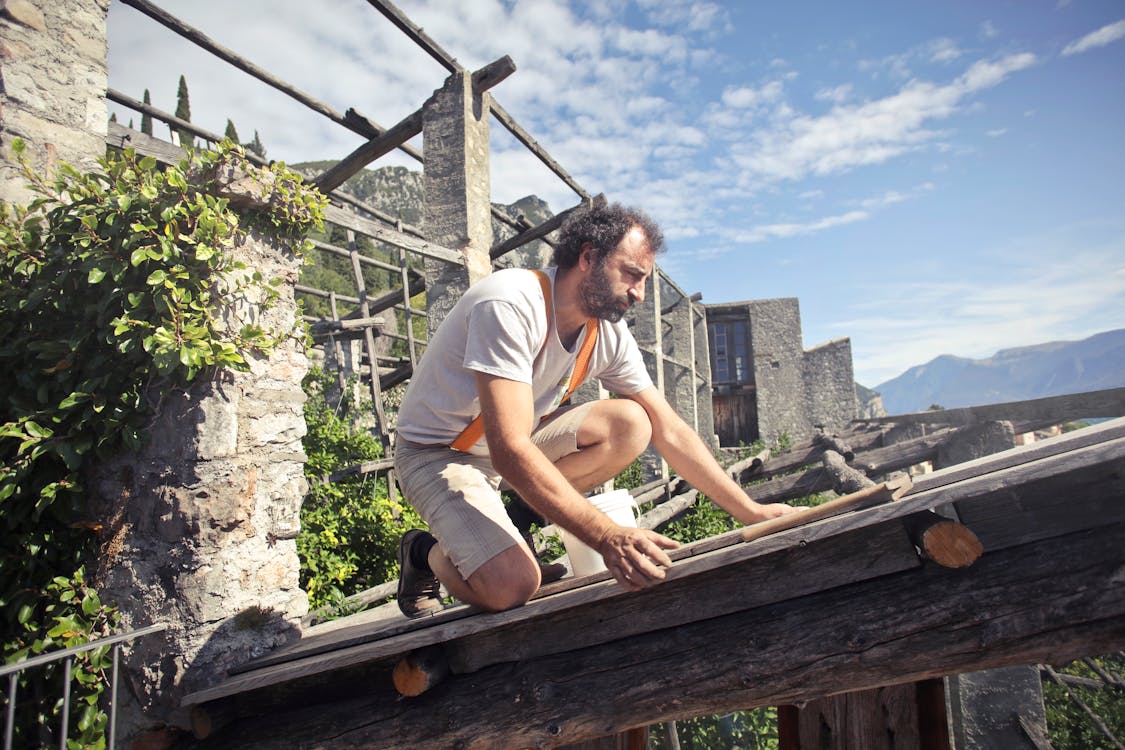Table of Contents
- What Exactly Are Family Traditions?
- The Psychological Powerhouse: Why Traditions Boost Well-being
- Weaving Your Own Family Tapestry: Practical Tips for Creating and Maintaining Traditions
- Overcoming Challenges: Keeping Traditions Alive
- The Ripple Effect: Traditions Beyond the Immediate Family
- Conclusion: The Timeless Treasure of Togetherness
The Enduring Magic of Family Traditions: Why They Matter More Than Ever
Remember the specific scent of cookies baking just before a holiday? The slightly off-key but enthusiastic singing of “Happy Birthday”? Or maybe the comfortable silence of a Sunday morning spent together reading different sections of the newspaper? These moments, often woven into the fabric of our lives through family traditions, are more than just pleasant memories. They are the invisible threads that stitch a family together, creating a unique tapestry of identity, connection, and shared history.
In today’s fast-paced, digitally saturated world, where external pressures constantly vie for our attention, the concept of tradition might seem quaint, perhaps even outdated. Yet, the opposite is true. In an era of constant change and distraction, the anchors provided by meaningful family rituals are arguably more crucial than ever. They offer stability, foster belonging, and create pockets of intentional connection that nourish the family soul.
This article dives deep into the heart of family traditions. We’ll explore what they truly are, unpack the profound psychological benefits they offer, provide practical tips for creating and maintaining your own, and discuss how to navigate the challenges that inevitably arise. Let’s embark on a journey to understand why these seemingly simple practices hold such immense power for building strong, resilient, and happy families.

What Exactly Are Family Traditions?
When we hear “family traditions,” our minds often jump straight to the big ones: Thanksgiving dinner, trimming the Christmas tree, lighting Hanukkah candles, or the annual summer vacation to the same beloved spot. While these are certainly important examples, family traditions encompass a much broader spectrum of activities and rituals.
Essentially, a family tradition is any activity, practice, or ritual that is repeated over time within a family unit, holding symbolic meaning and fostering a sense of connection and identity. They can be:
- Daily Rituals: Things like eating dinner together most nights, a specific bedtime story routine, a shared morning coffee moment, or even a silly secret handshake.
- Weekly Habits: Perhaps it’s Friday pizza and movie night, a Sunday walk in the park, attending a religious service together, or a family board game tournament.
- Annual Celebrations: Holidays, birthdays, anniversaries often come with their own set of established traditions – specific foods, decorations, songs, or ways of marking the occasion.
- Milestone Markers: How does your family celebrate achievements like graduations, new jobs, or losing a first tooth? These are traditions too.
- Unique Family Quirks: Maybe your family has a special way of celebrating the first snowfall, a funny phrase you always say in a certain situation, or a particular dish reserved only for when someone is feeling down.
It’s important to distinguish between a routine and a ritual or tradition. While routines (like brushing teeth before bed) provide structure, traditions and rituals are infused with deeper meaning, emotion, and a sense of shared experience. They are performed not just for efficiency, but for connection and significance. They tell a story about who you are as a family.
The Psychological Powerhouse: Why Traditions Boost Well-being
Family traditions aren’t just feel-good activities; they are powerful psychological tools that contribute significantly to the mental and emotional health of family members, both children and adults. Let’s break down the key benefits:
Creating a Sense of Belonging and Identity
In a world that often feels fragmented, traditions act as glue. They provide a powerful answer to the fundamental human need to belong. Participating in shared rituals reinforces the message: “You are part of this family. This is who we are. This is what we do together.”
These shared experiences weave a unique family identity. Whether it’s cheering for the same sports team, following a specific cultural practice, or simply having an inside joke related to a recurring event, traditions create a collective narrative. They connect us to our immediate family, our ancestors, and our cultural roots, giving us a stronger sense of self and place in the world. For children, this consistent reinforcement of belonging is foundational for developing self-esteem and a secure identity.

Providing Stability and Security in a Changing World
Life is inherently unpredictable. Change is constant – jobs shift, families move, circumstances evolve. In the midst of this flux, family traditions act as vital anchors, offering predictability, comfort, and a sense of normalcy.
Knowing that certain events or activities will happen regularly provides a comforting rhythm to life, especially for children who thrive on structure and predictability. When facing stressful times, like a family illness, a move, or even global uncertainty, the continuation of familiar traditions can be incredibly grounding. They offer a pocket of reliability and security when everything else feels chaotic. The simple act of maintaining a weekly game night or a specific holiday ritual can signal that, despite the challenges, the family unit remains strong and connected.
Strengthening Family Bonds and Communication
Perhaps the most obvious benefit is the dedicated time traditions carve out for connection. In our busy lives, it’s easy for family members to drift into their own orbits. Traditions mandate (in a gentle way) time spent together, focused on a shared activity.
This quality time is fertile ground for strengthening family bonding. Whether you’re decorating cookies, playing charades, or sharing stories around a campfire, you’re creating shared positive experiences. These activities naturally foster interaction and communication. Conversations flow more easily when engaged in a relaxed, enjoyable activity together. Traditions create opportunities to check in, laugh together, overcome small challenges (like a collapsing gingerbread house!), and simply enjoy each other’s presence, reducing feelings of isolation and strengthening emotional ties.
Passing Down Values and Heritage
Traditions are powerful vehicles for transmitting family values, cultural beliefs, and life lessons from one generation to the next. Often, this happens implicitly. The tradition of volunteering together teaches compassion. Saying grace before meals instills gratitude. Celebrating cultural holidays connects children to their heritage.
Stories are often shared during traditional gatherings – tales of ancestors, funny family anecdotes, lessons learned. Recipes, skills (like knitting or woodworking), and religious practices are passed down, creating a tangible link between generations. This intergenerational connection helps children understand where they come from and appreciate the values and history that shape their family. It fosters respect for elders and a sense of continuity.
Creating Lasting Memories and Joy
Think back to your own childhood. What memories stand out most vividly? Chances are, many of them are tied to family traditions. The anticipation leading up to a special event, the sensory details (sights, sounds, smells), the shared laughter, the feeling of togetherness – these elements combine to create potent, positive memories.
Traditions infuse life with moments of heightened joy and celebration. They punctuate the routine of everyday life with something special to look forward to. Marking milestones and holidays in meaningful, consistent ways elevates these moments, making them more memorable and significant. These cherished memories become the bedrock of a happy childhood and a source of comfort and connection throughout life.

Weaving Your Own Family Tapestry: Practical Tips for Creating and Maintaining Traditions
Inspired to be more intentional about traditions in your own family? Whether you’re starting from scratch, looking to revive old practices, or wanting to strengthen existing ones, here are some practical tips:
Start Small and Be Intentional
You don’t need to implement a dozen elaborate traditions overnight. That’s a recipe for overwhelm! Instead, start small. Think about what feels authentic and manageable for *your* family right now.
- What activities does your family genuinely enjoy doing together?
- What values do you want to emphasize?
- What times of the day or week naturally lend themselves to a shared ritual?
Maybe it’s as simple as implementing “Taco Tuesday,” reading one chapter of a book aloud each night, having a screen-free hour before bed, or taking a walk together after dinner. Choose one or two ideas and focus on consistency. The key is intentionality – consciously deciding to make space for this shared time.
Involve Everyone in the Process
Traditions are most powerful when they feel *shared*, not imposed. Whenever possible, involve all family members (age-appropriately) in brainstorming and choosing traditions. Ask your kids what *they* would enjoy doing regularly. What makes a holiday feel special to them?
This collaborative approach increases buy-in and makes everyone feel invested. It also ensures the traditions reflect the evolving interests and personalities within the family. A tradition cherished by young children might need tweaking as they become teenagers. Open communication about what’s working and what’s not helps keep traditions relevant and meaningful for everyone.
Embrace Imperfection and Flexibility
Life happens. Schedules get crazy, kids get sick, moods fluctuate. It’s crucial to remember that traditions should serve the family, not the other way around. Don’t let the pursuit of the “perfect” tradition become a source of stress.
Embrace imperfection. If Friday movie night needs to be Saturday morning cartoons one week, that’s okay. If the Thanksgiving turkey is a bit dry, focus on the laughter around the table. Flexibility is key. As families grow and change, traditions may need to adapt. A tradition that worked beautifully with young children might need a significant overhaul when they’re teenagers. The goal is connection, not rigid adherence to a specific formula. Be prepared to create flexible traditions that can bend without breaking.
Document Your Traditions (Optional but Recommended)
While not essential, documenting your traditions can add another layer of meaning and help preserve them for the future. This could involve:
- Taking photos or videos during traditional activities.
- Keeping a family journal where you write about special moments.
- Creating a family recipe book with dishes central to your traditions.
- Making a scrapbook dedicated to a specific annual event.
These records become tangible reminders of your shared history and can be precious heirlooms to pass down, making it easier for future generations to understand and continue the practices you cherish.
Reviving Old Traditions or Adapting Existing Ones
Look to your own past. Are there traditions from your childhood that you loved? Could they be revived or adapted for your current family? Talk to older relatives about their family traditions – you might uncover forgotten gems.
Similarly, review your existing habits. Are there routines you already have that could be elevated to the status of tradition with a little more intention? Maybe your current Sunday brunch could become a more defined ritual with specific roles or a special element. For blended families, this is a wonderful opportunity to consciously choose which traditions from previous family structures to keep, adapt, or blend, creating new, unique practices for the new family unit.
Overcoming Challenges: Keeping Traditions Alive
Maintaining traditions isn’t always easy. Life throws curveballs, and enthusiasm can wane. Here’s how to navigate common hurdles:
Dealing with Busy Schedules
This is perhaps the most common challenge. When everyone is pulled in different directions, finding time can feel impossible. The solution often lies in prioritization and simplification.
- Schedule it: Treat tradition time like any other important appointment. Put it on the calendar.
- Simplify: If an elaborate Sunday dinner is too much, could it be a simpler Sunday brunch or even just dessert together? Quality of connection matters more than complexity.
- Combine Activities: Can you incorporate a tradition into something you already need to do, like talking while cooking dinner together?
Navigating Changing Family Dynamics
Families evolve. Teenagers might resist activities they once loved. Divorce or remarriage creates new family structures (blended families). Children grow up and leave home (empty nest). These changes inevitably impact traditions.
- Open Communication: Talk honestly about how feelings and needs have changed. Acknowledge sadness or resistance.
- Adapt and Compromise: Be willing to modify traditions. Maybe the family vacation spot changes, or the holiday gathering looks different. For teens, find ways to give them more ownership or choice within the tradition.
- Create New Traditions: Sometimes, change necessitates creating entirely new traditions that better fit the current family reality. This is especially important in blended families to build a new shared identity.
Handling Resistance or Lack of Interest
What if family members just aren’t enthusiastic? Forcing participation rarely works and can breed resentment.
- Understand the ‘Why’: Is it the activity itself? The timing? Are they feeling disconnected for other reasons? Gently try to understand the root of the resistance.
- Find Common Ground: Can you tweak the tradition to include elements everyone enjoys? Offer choices within the tradition.
- Respect Individual Needs: Sometimes, it’s okay to let a tradition fade if it’s no longer serving the family. Don’t hold on so tightly that it becomes a source of conflict. Focus on finding *other* ways to connect.
- Lead by Example: Sometimes, quiet, consistent enthusiasm from one or two family members can eventually rekindle interest in others.

The Ripple Effect: Traditions Beyond the Immediate Family
The impact of strong family traditions often extends beyond the walls of your home. They can be a way to strengthen ties with extended family – think annual family reunions, shared holiday celebrations with grandparents, aunts, uncles, and cousins. These gatherings broaden the sense of belonging and connection to a larger family network.
Traditions can also build community. Participating in neighborhood block parties, volunteering together for a local cause, or joining community celebrations creates connections beyond the family unit, fostering a sense of civic engagement and belonging within a wider social fabric.
Furthermore, the values, communication skills, and sense of security instilled through family traditions shape individuals. People who grow up with strong, positive traditions often carry those values and practices into their own relationships, workplaces, and communities, creating a positive ripple effect.
Conclusion: The Timeless Treasure of Togetherness
In the grand narrative of family life, traditions are the recurring motifs, the comforting refrains, the vibrant splashes of color that make the story uniquely ours. They are far more than just habits or routines; they are intentional acts of connection that weave a rich tapestry of identity, belonging, and shared joy.
From the simplest bedtime story ritual to the most elaborate holiday feast, family traditions provide essential psychological anchors. They offer stability in turbulent times, strengthen family bonds through dedicated quality time, pass down invaluable family values and heritage, and create a treasure trove of positive memories that last a lifetime.
While maintaining traditions requires effort, intentionality, and a willingness to adapt, the rewards are immeasurable. They are an investment in the emotional health and resilience of your family.
So, take a moment to reflect on the traditions in your own life. Which ones do you cherish? Are there new ones you’d like to create? Remember to start small, involve everyone, embrace flexibility, and focus on the core purpose: strengthening the precious bonds of family. Because ultimately, these shared rituals are a powerful way to say, “We belong together. This is our story. And it’s a story worth celebrating.”










